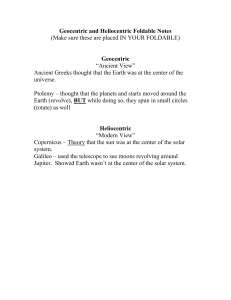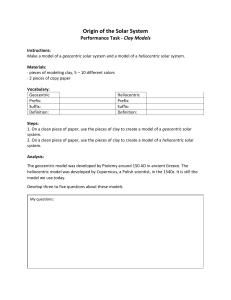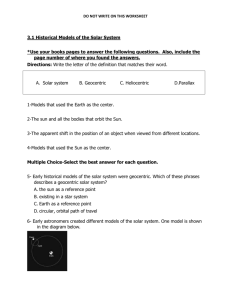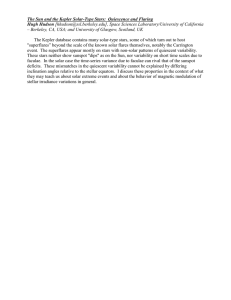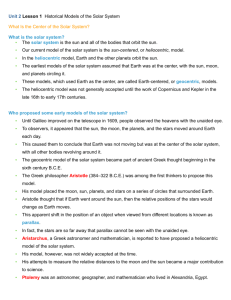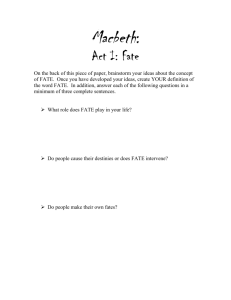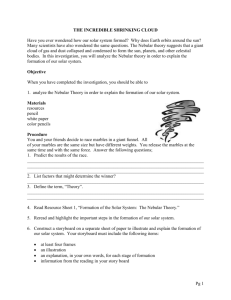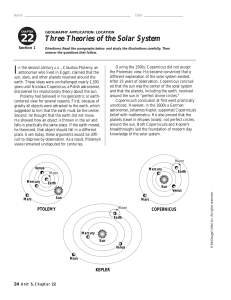SPECTRA OF SCIENCE Chapter 19/20 Learning Targets
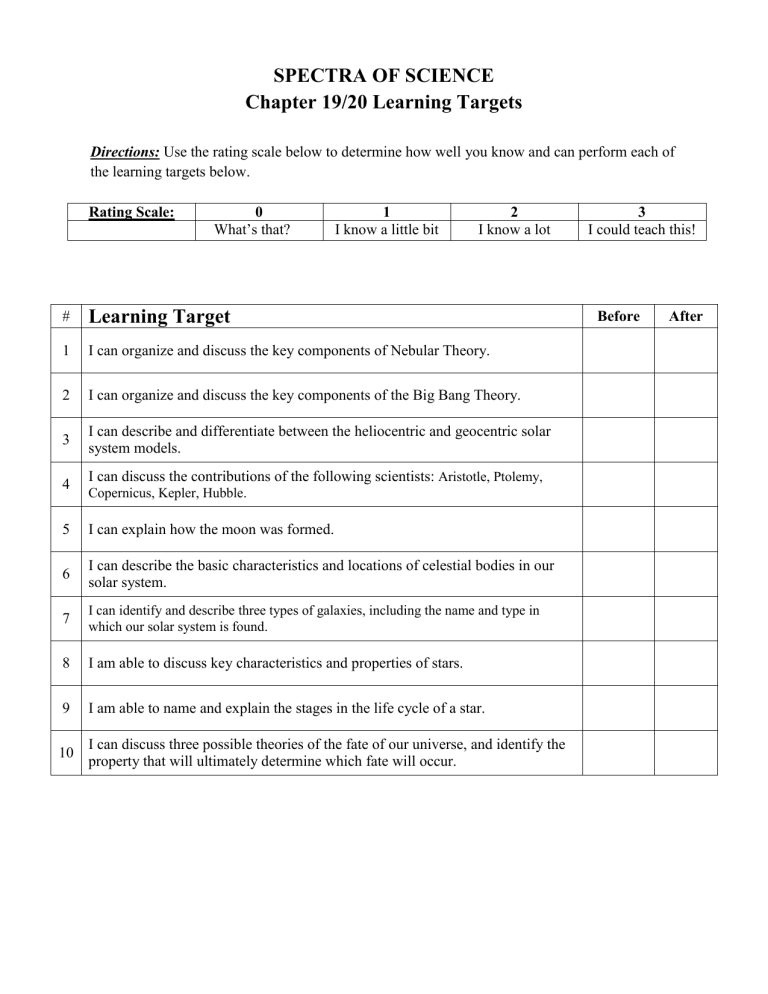
SPECTRA OF SCIENCE
Chapter 19/20 Learning Targets
Directions: Use the rating scale below to determine how well you know and can perform each of the learning targets below.
Rating Scale: 0 1
What’s that? I know a little bit
2
I know a lot
3
I could teach this!
#
Learning Target
1 I can organize and discuss the key components of Nebular Theory.
Before After
2 I can organize and discuss the key components of the Big Bang Theory.
3
I can describe and differentiate between the heliocentric and geocentric solar system models.
4
I can discuss the contributions of the following scientists: Aristotle, Ptolemy,
Copernicus, Kepler, Hubble.
5 I can explain how the moon was formed.
6
I can describe the basic characteristics and locations of celestial bodies in our solar system.
7
I can identify and describe three types of galaxies, including the name and type in which our solar system is found.
8 I am able to discuss key characteristics and properties of stars.
9 I am able to name and explain the stages in the life cycle of a star.
10
I can discuss three possible theories of the fate of our universe, and identify the property that will ultimately determine which fate will occur.
SPECTRA OF SCIENCE
Chapter 19/20 Study Guide
**Due on: _______________________**
Directions: Complete each of the items below on a separate sheet of notebook paper. Be sure to number each item.
1.
What do each of these models or theories describe? a) Heliocentric b) Geocentric b) Ptolemy c) Copernicus c) Nebular Theory d) Big Bang Theory
2.
What contribution did each of these astronomers make? a) Aristotle d) Kepler e) Hubble
3.
Identify the basic steps in the formation of the solar system.
4.
Identify the basic steps in the formation of the moon.
5.
What are some of the basic characteristics and locations of these bodies? a) Inner/ terrestrial planets b) Outer planets/Gas Giants
6.
List and describe three types of galaxies.
7.
Which type of galaxy do we live in? What is its name? c) Comets d) Asteroids
8.
Know these key characteristics of stars: a) Identify what determines their color b) Identify what determines their brightness c) Identify what forces hold them together d) Identify what type of reaction fuels them e) Identify where our sun fits in
9.
What property will determine the fate of stars and the fate of our universe?
10.
Name the stages in a star’s live cycle.
11.
Define a) Light-year b) Supercluster c) d)
Red shift
Quasar
